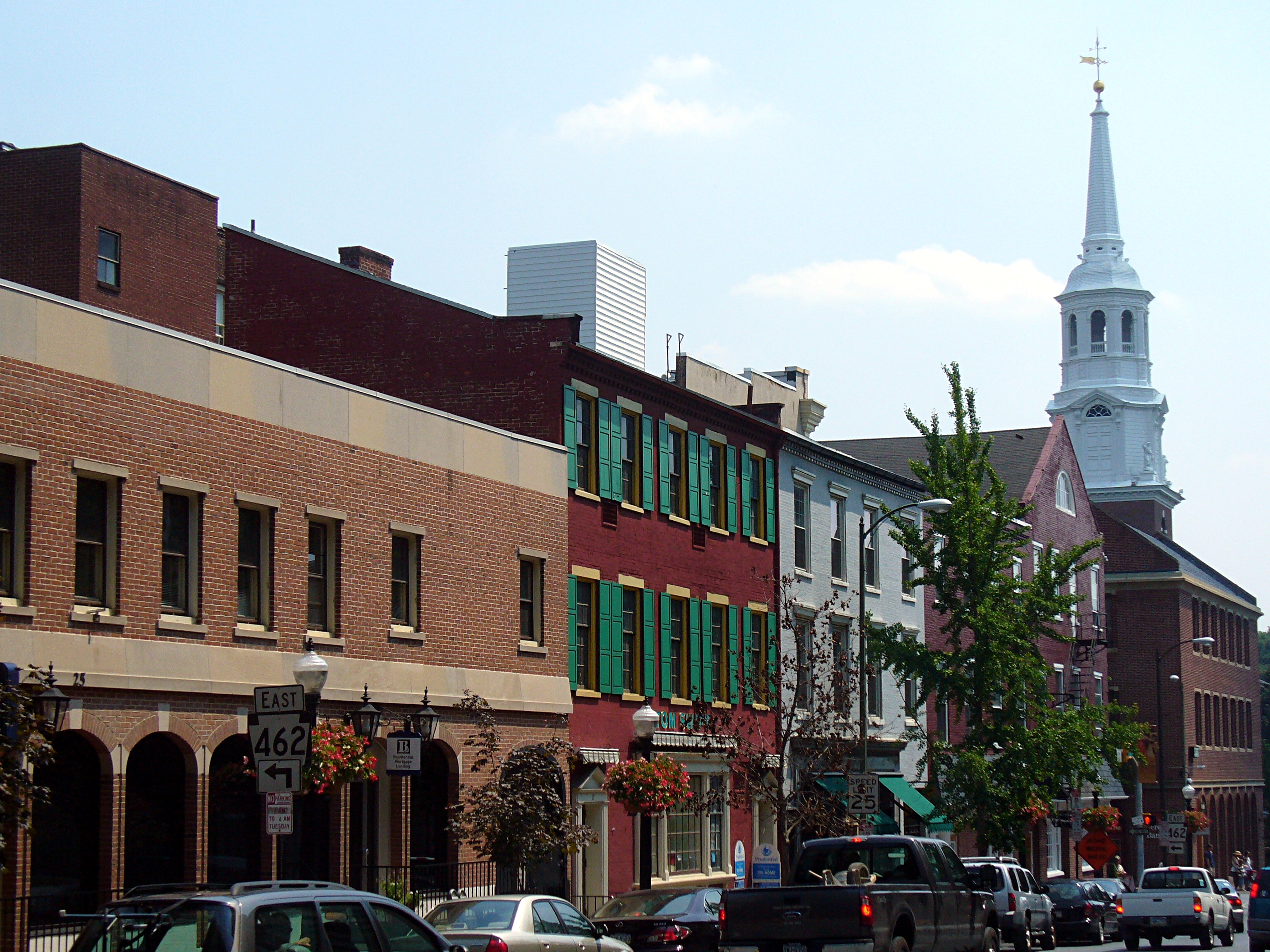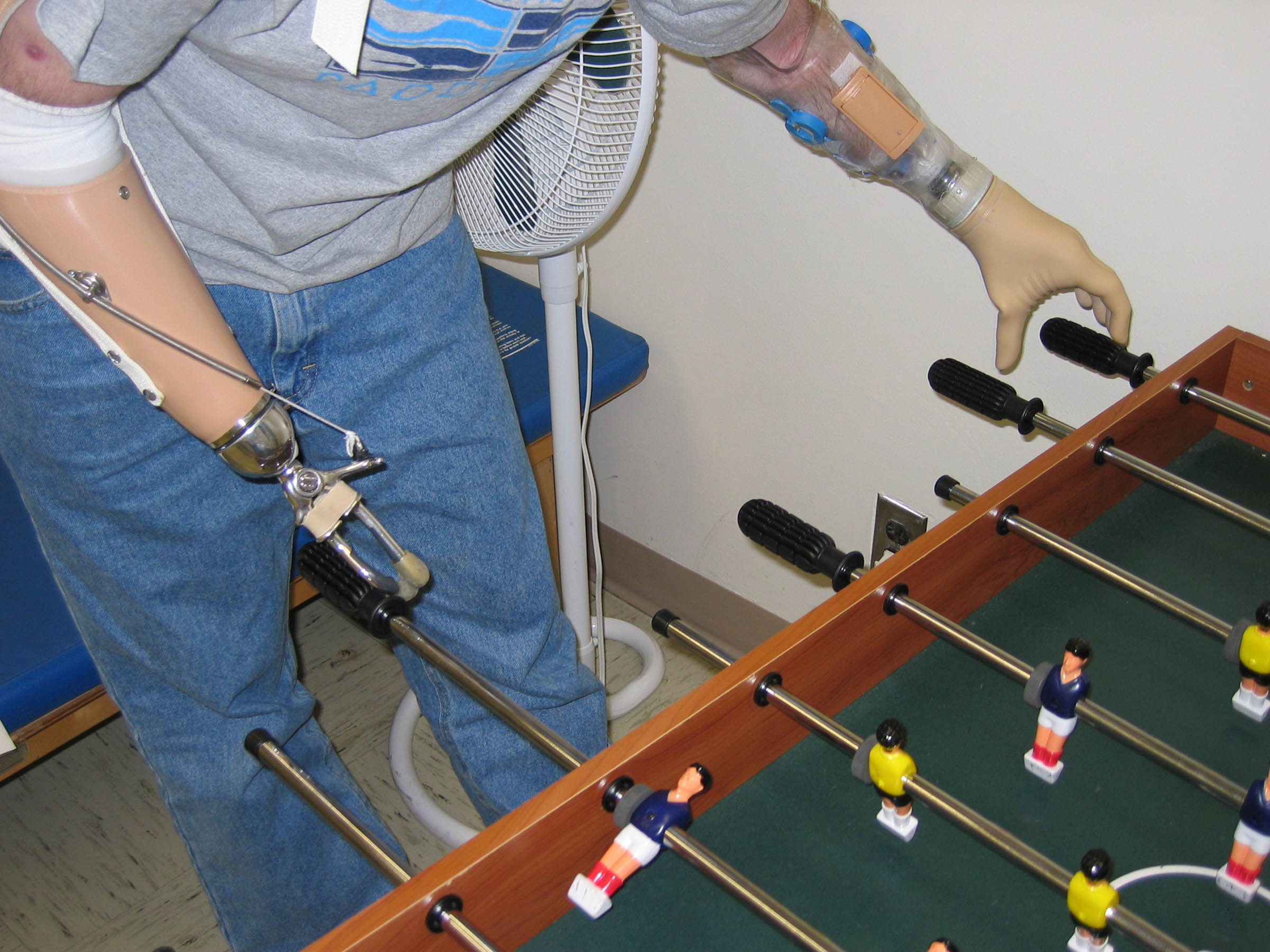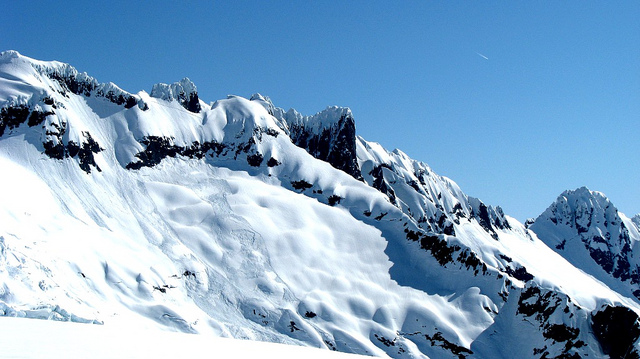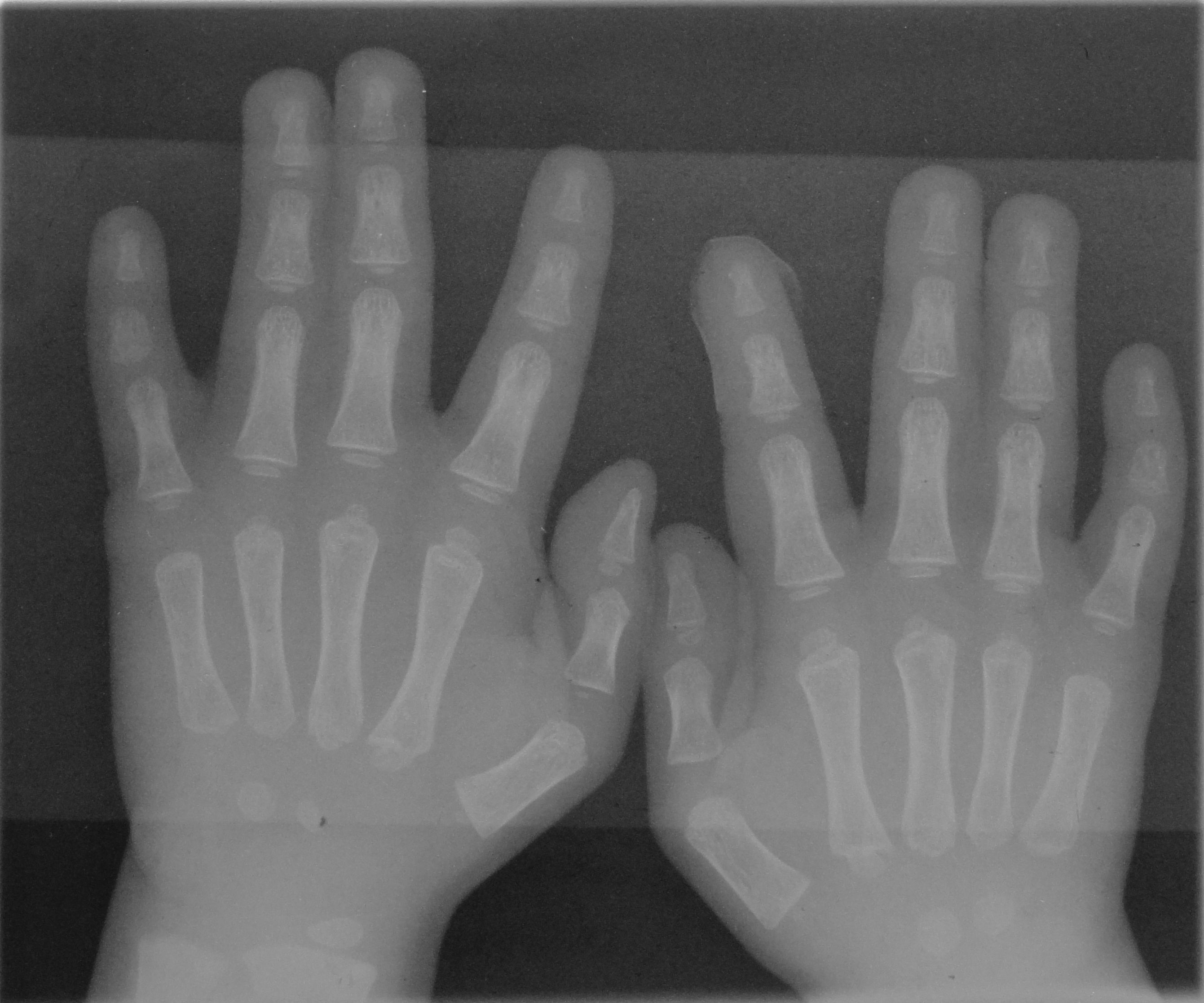|
Hugh Herr
Hugh Herr (born October 25, 1964) is an American rock climber, engineer, and biophysicist. When he was young, both of his legs were amputated below the knee due to an accident during an unexpected blizzard that occurred on a rock climbing trip. After months of surgeries and rehabilitation, Herr began climbing again, using specialized prostheses he designed for himself, becoming the first person with a major amputation to perform in a sport on par with elite-level, able-bodied persons. He holds the patents to the Rheo Knee, an active ankle-foot orthosis, which is the world's first powered ankle-foot prosthesis. Early life The youngest of five siblings of a Mennonite family from Lancaster, Pennsylvania, Hugh Herr was a prodigy rock climber: by age 8, he had scaled the face of the Mount Temple (Alberta), Mount Temple in the Canadian Rockies, and by 17 he was acknowledged to be one of the best climbers in the United States. In January 1982, after having ascended a difficult techni ... [...More Info...] [...Related Items...] OR: [Wikipedia] [Google] [Baidu] |
Lancaster, Pennsylvania
Lancaster ( ) is a city in Lancaster County, Pennsylvania, United States, and its county seat. With a population of 58,039 at the 2020 United States census, 2020 census, it is the List of municipalities in Pennsylvania, eighth-most populous city in the state. It is a core city within South Central Pennsylvania, with 552,984 residents in the Lancaster Metropolitan statistical area, metropolitan area. Settled in the 1720s, Lancaster is one of the oldest inland cities in the US. It served as the capital of Pennsylvania from 1799 to 1812. The city's primary industries include healthcare, tourism, public administration, manufacturing, and both professional and semi-professional services. Lancaster is located southwest of Allentown, Pennsylvania, Allentown and west of Philadelphia and is a hub of Pennsylvania Dutch Country. History 18th century Originally called Hickory Town, Lancaster was renamed after the English city of Lancaster, Lancashire, Lancaster by native John Wright ... [...More Info...] [...Related Items...] OR: [Wikipedia] [Google] [Baidu] |
Frostbite
Frostbite is a skin injury that occurs when someone is exposed to extremely low temperatures, causing the freezing of the skin or other tissues, commonly affecting the fingers, toes, nose, ears, cheeks and chin areas. Most often, frostbite occurs in the hands and feet. The initial symptoms are typically a feeling of cold and tingling or numbing. This may be followed by clumsiness with a white or bluish color to the skin. Swelling or blistering may occur following treatment. Complications may include hypothermia or compartment syndrome. People who are exposed to low temperatures for prolonged periods, such as winter sports enthusiasts, military personnel, and homeless individuals, are at greatest risk. Other risk factors include drinking alcohol, smoking, mental health problems, certain medications, and prior injuries due to cold. The underlying mechanism involves injury from ice crystals and blood clots in small blood vessels following thawing. Diagnosis is based on sympt ... [...More Info...] [...Related Items...] OR: [Wikipedia] [Google] [Baidu] |
Prostheses
In medicine, a prosthesis (: prostheses; from ), or a prosthetic implant, is an artificial device that replaces a missing body part, which may be lost through physical trauma, disease, or a condition present at birth (congenital disorder). Prostheses may restore the normal functions of the missing body part, or may perform a cosmetic function. A person who has undergone an amputation is sometimes referred to as an amputee, however, this term may be offensive. Rehabilitation for someone with an amputation is primarily coordinated by a physiatrist as part of an inter-disciplinary team consisting of physiatrists, prosthetists, nurses, physical therapists, and occupational therapists. Prostheses can be created by hand or with computer-aided design (CAD), a software interface that helps creators design and analyze the creation with computer-generated 2-D and 3-D graphics as well as analysis and optimization tools. Types A person's prosthetic device should be designed and assembled t ... [...More Info...] [...Related Items...] OR: [Wikipedia] [Google] [Baidu] |
Wall Climbing At H2
A wall is a structure and a surface that defines an area; carries a load; provides security, shelter, or soundproofing; or serves a decorative purpose. There are various types of walls, including border barriers between countries, brick walls, defensive walls in fortifications, and retaining walls that hold back dirt, stone, water, or noise. Walls can also be found in buildings, where they support roofs, floors, and ceilings, enclose spaces, and provide shelter and security. The construction of walls can be categorized into framed walls and mass-walls. Framed walls transfer the load to the foundation through posts, columns, or studs and typically consist of structural elements, insulation, and finish elements. Mass-walls are made of solid materials such as masonry, concrete, adobe, or rammed earth. Walls may also house utilities like electrical wiring or plumbing and must conform to local building and fire codes. Walls have historically served defensive purposes, with th ... [...More Info...] [...Related Items...] OR: [Wikipedia] [Google] [Baidu] |
Titanium
Titanium is a chemical element; it has symbol Ti and atomic number 22. Found in nature only as an oxide, it can be reduced to produce a lustrous transition metal with a silver color, low density, and high strength, resistant to corrosion in sea water, aqua regia, and chlorine. Titanium was discovered in Cornwall, Great Britain, by William Gregor in 1791 and was named by Martin Heinrich Klaproth after the Titans of Greek mythology. The element occurs within a number of minerals, principally rutile and ilmenite, which are widely distributed in the Earth's crust and lithosphere; it is found in almost all living things, as well as bodies of water, rocks, and soils. The metal is extracted from its principal mineral ores by the Kroll and Hunter processes. The most common compound, titanium dioxide (TiO2), is a popular photocatalyst and is used in the manufacture of white pigments. Other compounds include titanium tetrachloride (TiCl4), a component of smoke screens and cata ... [...More Info...] [...Related Items...] OR: [Wikipedia] [Google] [Baidu] |
Prosthesis
In medicine, a prosthesis (: prostheses; from ), or a prosthetic implant, is an artificial device that replaces a missing body part, which may be lost through physical trauma, disease, or a condition present at birth (Congenital, congenital disorder). Prostheses may restore the normal functions of the missing body part, or may perform a cosmetic function. A person who has undergone an amputation is sometimes referred to as an Amputation, amputee, however, this term may be offensive. Rehabilitation for someone with an amputation is primarily coordinated by a Physical medicine and rehabilitation, physiatrist as part of an inter-disciplinary team consisting of physiatrists, prosthetists, nurses, physical therapists, and occupational therapists. Prostheses can be created by hand or with computer-aided design (CAD), a software interface that helps creators design and analyze the creation with computer-generated Technical drawing, 2-D and 3D computer graphics, 3-D graphics as well as an ... [...More Info...] [...Related Items...] OR: [Wikipedia] [Google] [Baidu] |
Rehabilitation Medicine
Physical medicine and rehabilitation (PM&R), also known as physiatry, and outside the United States as physical and rehabilitation medicine (PRM), is a branch of medicine that aims to enhance and restore functional ability and quality of life to people with physical impairments or disabilities. Officially established in the United States in the mid-1900s, PM&R has played a major role in patient recovery following several major epidemics and both world wars. Common medical conditions treated by PM&R physicians include spinal cord injury, brain injury, musculoskeletal injury, stroke, pain, and spasticity from muscle, ligament, or nerve damage. PM&R physicians lead rehabilitation teams in inpatient and outpatient settings and are trained in medication management, electrodiagnosis, and targeted injections. A physician having completed training in this field may be referred to as a physiatrist. Scope of the field Physical medicine and rehabilitation encompasses a variety of sett ... [...More Info...] [...Related Items...] OR: [Wikipedia] [Google] [Baidu] |
Surgery
Surgery is a medical specialty that uses manual and instrumental techniques to diagnose or treat pathological conditions (e.g., trauma, disease, injury, malignancy), to alter bodily functions (e.g., malabsorption created by bariatric surgery such as gastric bypass), to reconstruct or alter aesthetics and appearance (cosmetic surgery), or to remove unwanted tissue (biology), tissues (body fat, glands, scars or skin tags) or foreign bodies. The act of performing surgery may be called a surgical procedure or surgical operation, or simply "surgery" or "operation". In this context, the verb "operate" means to perform surgery. The adjective surgical means pertaining to surgery; e.g. surgical instruments, operating theater, surgical facility or surgical nurse. Most surgical procedures are performed by a pair of operators: a surgeon who is the main operator performing the surgery, and a surgical assistant who provides in-procedure manual assistance during surgery. Modern surgical opera ... [...More Info...] [...Related Items...] OR: [Wikipedia] [Google] [Baidu] |
Avalanche
An avalanche is a rapid flow of snow down a Grade (slope), slope, such as a hill or mountain. Avalanches can be triggered spontaneously, by factors such as increased precipitation or snowpack weakening, or by external means such as humans, other animals, and earthquakes. Primarily composed of flowing snow and air, large avalanches have the capability to capture and move ice, rocks, and trees. Avalanches occur in two general forms, or combinations thereof: slab avalanches made of tightly packed snow, triggered by a collapse of an underlying weak snow layer, and loose snow avalanches made of looser snow. After being set off, avalanches usually accelerate rapidly and grow in mass and volume as they capture more snow. If an avalanche moves fast enough, some of the snow may mix with the air, forming a powder snow avalanche. Though they appear to share similarities, avalanches are distinct from slush flows, Mudflow, mudslides, Landslide#Debris landslide, rock slides, and serac collap ... [...More Info...] [...Related Items...] OR: [Wikipedia] [Google] [Baidu] |
Hand
A hand is a prehensile, multi-fingered appendage located at the end of the forearm or forelimb of primates such as humans, chimpanzees, monkeys, and lemurs. A few other vertebrates such as the Koala#Characteristics, koala (which has two thumb#Opposition and apposition, opposable thumbs on each "hand" and fingerprints extremely similar to human fingerprints) are often described as having "hands" instead of paws on their front limbs. The raccoon is usually described as having "hands" though opposable thumbs are lacking. Some evolutionary anatomists use the term ''hand'' to refer to the appendage of digits on the forelimb more generally—for example, in the context of whether the three Digit (anatomy), digits of the bird hand involved the same Homology (biology), homologous loss of two digits as in the dinosaur hand. The human hand usually has five digits: Finger numbering#Four-finger system, four fingers plus one thumb; however, these are often referred to collectively as Finger ... [...More Info...] [...Related Items...] OR: [Wikipedia] [Google] [Baidu] |
Finger
A finger is a prominent digit (anatomy), digit on the forelimbs of most tetrapod vertebrate animals, especially those with prehensile extremities (i.e. hands) such as humans and other primates. Most tetrapods have five digits (dactyly, pentadactyly),#Cha1998, Chambers 1998 p. 603#OxfIll, Oxford Illustrated pp. 311, 380 and short digits (i.e. significantly shorter than the metacarpal/metatarsals) are typically referred to as toes, while those that are notably elongated are called fingers. In humans, the fingers are flexibly joint, articulated and opposable, serving as an important organ of somatosensory, tactile sensation and fine motor skill, fine movements, which are crucial to the dexterity of the hands and the ability to grasp and object manipulation, manipulate objects. Land vertebrate fingers As terrestrial vertebrates were evolution, evolved from lobe-finned fish, their forelimbs are phylogeny, phylogenetically equivalent to the pectoral fins of fish. Within the taxon, ... [...More Info...] [...Related Items...] OR: [Wikipedia] [Google] [Baidu] |
Foot
The foot (: feet) is an anatomical structure found in many vertebrates. It is the terminal portion of a limb which bears weight and allows locomotion. In many animals with feet, the foot is an organ at the terminal part of the leg made up of one or more segments or bones, generally including claws and/or nails. Etymology The word "foot", in the sense of meaning the "terminal part of the leg of a vertebrate animal" comes from Old English ''fot'', from Proto-Germanic *''fot'' (source also of Old Frisian ''fot'', Old Saxon ''fot'', Old Norse ''fotr'', Danish ''fod'', Swedish ''fot'', Dutch ''voet'', Old High German ''fuoz'', German ''Fuß'', Gothic ''fotus'', all meaning "foot"), from PIE root *''ped-'' "foot". The plural form ''feet'' is an instance of i-mutation. Structure The human foot is a strong and complex mechanical structure containing 26 bones, 33 joints (20 of which are actively articulated), and more than a hundred muscles, tendons, and ligaments.Podiatry Chan ... [...More Info...] [...Related Items...] OR: [Wikipedia] [Google] [Baidu] |










